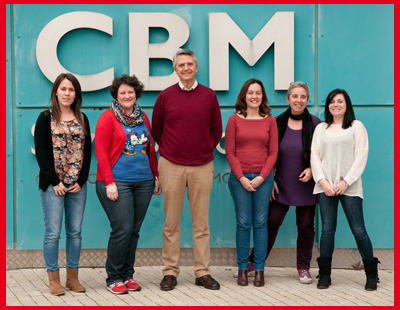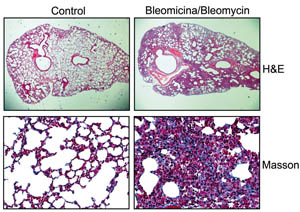Fisiopatología molecular de la fibrosis
Nuestro laboratorio esta interesado en los mecanismos moleculares que llevan a la fibrogenesis en patología humana. Después de un largo periodo dedicado al estudio de la pared vascular y la biologia redox, nuestros principales esfuerzos se centran actualmente en comprender el proceso de la  fibrogenesis con un enfasis en el papel de los microRNAs y su regulación por metabolismo y señalización redox.
fibrogenesis con un enfasis en el papel de los microRNAs y su regulación por metabolismo y señalización redox. 
PUBLICACIONES RECIENTES
- Protective role for miR-9-5p in the fibrogenic transformation of human dermal fibroblasts.Fibrogenesis Tissue Repair. 2016;9:7.
- Targeting vascular (endothelial) dysfunction.Br J Pharmacol. 2016
- Role of redoximiRs in fibrogenesis. Redox Biol. 2016; 7:58-67.
- MicroRNA-mediated regulation of glutathione and methionine metabolism and its relevance for liver disease. Free Radic Biol Med. 2016.
- NOX4-dependent Hydrogen peroxide promotes shear stress-induced SHP2 sulfenylation and eNOS activation. Free Radic Biol Med. 2015; 89:419-30.
- miR-9-5p suppresses pro-fibrogenic transformation of fibroblasts and prevents organ fibrosis by targeting NOX4 and TGFBR2.EMBO Rep. 2015; 16(10):1358-77.
- Antioxidant responses and cellular adjustments to oxidative stress. Redox Biol. 2015; 6:183-97.
- L-Plastin S-glutathionylation promotes reduced binding to β-actin and affects neutrophil functions. Free Radic Biol Med. 2015; 86:1-15.
- Targeting of Gamma-Glutamyl-Cysteine Ligase by miR-433 Reduces Glutathione Biosynthesis and Promotes TGF-β-Dependent Fibrogenesis. Antioxid Redox Signal. 2015; 23(14):1092-105.
- Laminar shear stress regulates mitochondrial dynamics, bioenergetics responses and PRX3 activation in endothelial cells. Biochim Biophys Acta. 2014;1843(11):2403-13.




DATOS DE CONTACTO
Esta dirección de correo electrónico está siendo protegida contra los robots de spam. Necesita tener JavaScript habilitado para poder verlo. 91 1964455. CBMSO-CSIC. Nicolás Cabrera 1.Madrid 28049
